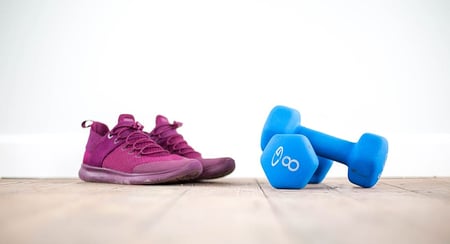Ditch the stereotypes: A simple guide to older adults fitness programs
Natalie Doornink | Sep 15, 2020
Fitness matters to older adults for a multitude of reasons: improved strength, balance and alignment, range of motion, longevity, mental acuity, and overall wellbeing. Even with these benefits, older adults are often assumed to fit in to the stereotypical “seniors” or “old folks” exercise categories.
However, participants who attend my older adults’ classes at Walker Methodist Levande range from 50 years old to 90. They’re competent in understanding their bodies and what they intend to accomplish with guidance. Sure, there are hesitations and fears at first, but they overcome. Consider looking at fitness programming for older adults in a non-traditional way. My philosophy is this: every exercise must serve a purpose, and we must be intentional in how we create classes and programs.
 If you’re looking to join or start a program or offer classes for older adults, here are five tips:
If you’re looking to join or start a program or offer classes for older adults, here are five tips:
- Atmosphere: Create a positive, energetic, clean, and inviting setting to welcome all ages and ability levels…no matter the person, their attendance, or their level of fitness.
- Standards: The instructor/trainer should have necessary credentials and experience to ensure a safe and effective approach to exercise, allowing each person to feel successful at their own pace.
- Personal Connection: Participants should feel appreciated, inspired, and noticed by the instructor/trainer and encouraged to work at an appropriate pace with varying options and modifications. Does the instructor/trainer empathize, relate, and care for each individual? Is age considered a barrier or used as leverage?
- Equipment: Quality and variety are key when looking for safe and effective equipment. Programs should utilize diverse equipment options current with today’s fitness standards, and methods should be appropriate for every body.
- Program philosophy: Look for a safe, creative approach grounded in proper body mechanics and function. Does the class or program connect rehabilitation and recovery methods? Are modifications given? Does the instructor/trainer cater to their own interests or to the client’s needs and abilities?
Recently, we upgraded our strength, cardio, and core/balance class schedule at Levande. And, we introduced new foam rolling, mat pilates fusion, TRX training, and zoomer circuit classes. The best part? All classes are adaptable to each participant. We provide a fresh format and approach for classes and programs. Fitness for older adults doesn’t have to be boring. Instead, we can give them the best training methods in the industry. Years ago, an instructor told me, “There is no such thing as difficult clients. We must change our teaching technique to best fit the client.” The same goes for offering programs and classes to seniors. During the COVID-19 pandemic, our fitness center classes, programs, and schedules may look different because of safety regulations. However, we are still committed to providing our residents with engaging, beneficial, and fun ways to be healthy and active.
Fitness matters to older adults. So, approaches and philosophies must matter, too. Every day, I am inspired by residents who grow and by relationships that develop in a short time. Don’t let age or physical limitations be an obstacle. Focus on adapting and creating methods that work positively, and you’ll see success.
